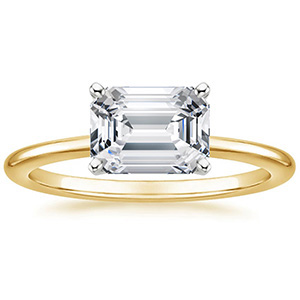
Thursday, Jewelers of America (JA) and the Jewelers Board of Trade (JBT) jointly released their 2019 Retail Jewelers Benchmarking Study—a report packed with 2018 financial information collected from U.S. retail jewelers.
The survey was sent to retail jewelers “in a variety of operational capacities ranging from independents to companies with multiple locations,” according to a JA release. It included 350 questions spanning six different areas of business, including merchandise and services, operation and staffing, e-commerce and social media, budget and expenses, key performance indicators, and employment.
The full study, priced at $295, is offered to retailers primarily so they can use its data to gauge how their store’s profitability, productivity, and financial performance compare to industry averages—and then make moves to increase profitability.
Here are some key takeaways from the study:
What Retailers Are Selling (Merchandise)
++ More than 90% of respondents offered the following products: karat gold jewelry (95%), natural diamond jewelry (95%), repairs and appraisals (94%).
++ 80%–90% offered: precious and semiprecious jewelry (90%), sterling silver jewelry (86%), pearl jewelry (86%), natural loose diamonds (82%).
++ 50%–75% offered: women’s Jewelry (74%), timepieces and watchbands (69%), all other fine jewelry (61%), fashion jewelry (54%), previously owned jewelry that’s less than 100 years old (54%).
++ 25%–50% offered: metal (buying and selling) (46%), lab-grown loose diamonds (38%), beads and charms (36%), antiques/estate jewelry 100+ years old (32%).
++ Less than 25% offered: lab-grown jewelry (22%), “other” (19%), flatware and china (10%).
What Retailers Sold in Net Sales
++ Natural diamond jewelry, along with timepieces, made up for 50% of selling.
++ Beads and charms (at 11% due to a single company with 60+ locations that’s skewing the percent ratio).
++ Natural loose diamonds (at 8%; this increases to 12% without the multi-location company)
++ Precious and semi-precious (7%)
++ Repair and appraisals (6%)
++ Karat gold jewelry (5%)
Takeaway: The majority of sales came from natural diamond jewelry as the No. 1 category at over 30% sales penetration, followed by timepieces at 17%. Both of these categories represent half of most retailers’ sales with loose (natural) diamonds, precious and semiprecious, and repair and karat gold jewelry occupying the top positions. Pearl and sterling silver jewelry were one of the top offerings, but did not rank high as far as actual dollar selling due to lower unit prices.
Lab vs. Natural Diamond Selling
++ For every 100 respondents who sold natural loose diamonds, about 34 also sold lab-grown loose diamonds.
++ Average unit retail in dollar for natural loose diamonds = $4,998
++ Average unit retail in dollars for lab-grown loose diamonds = $3,214
++ But profit margin is higher by 10 percentage points at 48%.
++ Profit margin for lab vs. natural loose diamonds is at 39%.
Bridal-Specific Selling
++ 81% of dollar sales were in engagement rings and wedding bands, with diamonds at 65% and 16%, respectively.
++ As more brides shift to alternative engagement rings, we see the trend not reflecting strongly for most of these independent jewelers with only 8% selling engagement rings with other center stones.
++ Company-produced custom bridal jewelry occupied sales only at 5% for respondents.
++ Other bridal jewelry purchases and engagement rings with other stones came in at 5%.
Sales by Product Type
++ Customization: 75% of survey participants said their sales were from purchased jewelry (finished goods), while 25% sales came from custom creations.
++ Branded vs. non-branded: 62% sold non-branded jewelry and 38% sold branded jewelry.
++ Asset vs. memo: The majority or 61% of store merchandise were purchased as asset inventory, while 39% were purchased as memo inventory.
Retailers can buy the full study here.
Photo: Brilliant Earth diamond ring (courtesy Brilliant Earth)
Follow me on Instagram: @emilivesilind
- Subscribe to the JCK News Daily
- Subscribe to the JCK Special Report
- Follow JCK on Instagram: @jckmagazine
- Follow JCK on X: @jckmagazine
- Follow JCK on Facebook: @jckmagazine